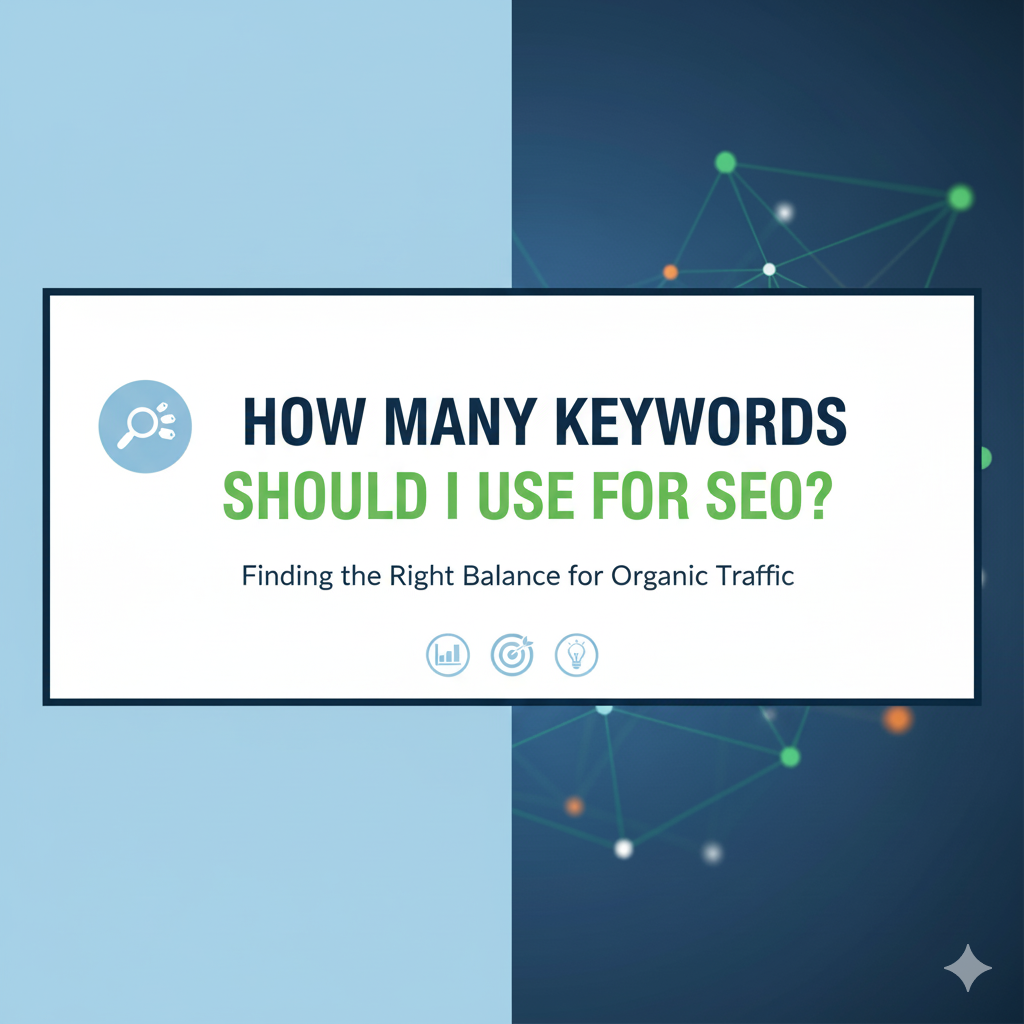When it comes to Search Engine Optimization (SEO), one of the most common questions marketers and website owners ask is:
“How many keywords should I use for SEO on a page?”
The answer isn’t a fixed number—it depends on your content length, user intent, and the type of keywords you are targeting. In this in-depth guide, we’ll explore everything you need to know about keyword usage, including semantic SEO, keyword density, and best practices for modern SEO success.
1. Introduction to Keywords in SEO
Keywords are the search terms users type into search engines to find information. In SEO, strategically placing keywords in your content helps search engines understand what your page is about. However, keyword stuffing—overusing them—can harm your rankings.
2. What Is Semantic SEO?
Semantic SEO is the process of optimizing your content based on the meaning behind search queries rather than just exact match keywords. This involves:
- Using related terms and phrases (LSI keywords)
- Understanding search intent
- Covering a topic in-depth
With semantic SEO, you don’t need to repeat the same keyword over and over. Instead, focus on topic relevance, content structure, and answering user questions comprehensively.
3. Types of Keywords You Should Use
Instead of just focusing on one main keyword, include a mix of the following:
| Keyword Type | Example |
| Primary Keyword | how many keywords for SEO |
| Secondary Keywords | ideal keyword density, SEO keyword usage |
| LSI (Related) Keywords | semantic SEO, keyword stuffing, content optimization |
| Long-tail Keywords | how many keywords to use in a blog post for SEO |
Using a variety of keyword types helps cover a broader search intent and improves your chances of ranking for multiple queries.
4. Ideal Keyword Count per Page
There’s no magic number, but here’s a general guideline:
| Content Length | Recommended Keywords |
| 300–500 words | 2–3 primary + LSI |
| 600–1,000 words | 4–6 primary + LSI |
| 1,000–2,000+ | 6–10+ primary + LSI |
⚠️ Important: Use keywords where they fit naturally, and don’t force them.
5. Keyword Density: Does It Still Matter?
Keyword density (the percentage of times a keyword appears in your content) used to be a major SEO factor. Today, Google focuses more on context and relevance.
A good rule of thumb is:
- 1–2% keyword density for your primary keyword
- Use related terms throughout your content
- Avoid over-optimization
Example: In a 1,000-word article, your main keyword could appear around 10–15 times naturally.
6. How to Use Keywords Naturally
Here’s where and how to include your keywords:
✅ Places to Add Keywords:
- Page Title
- Meta Description
- URL Slug
- H1 and H2 Headings
- First 100 words
- Alt text for images
- Internal links and anchor text
- Conclusion paragraph
❌ Avoid:
- Keyword stuffing
- Irrelevant keyword placement
- Using the same keyword in every sentence
The goal is to enhance readability while signaling relevance to search engines.
7. Tools to Help You Optimize Keywords
Here are some helpful tools to improve your keyword strategy:
| Tool Name | Features |
| Google Keyword Planner | Free tool for keyword research |
| Ahrefs | Keyword analysis, competitor research |
| SEMrush | SEO audit, keyword gaps, and trends |
| Surfer SEO | Keyword suggestions, content structure |
| Frase | Semantic topic clustering & optimization |
Use these tools to find semantic variations and ensure your content stays competitive.
8. Final Thoughts & Best Practices
To sum it up:
- Don’t chase a specific number—focus on quality and context
- Use a blend of keyword types
- Apply semantic SEO strategies for deeper topic coverage
- Write for humans first, search engines second
- Monitor keyword performance regularly
By optimizing for meaning—not just specific phrases—you align with Google’s algorithms and provide better value to your readers.
9. FAQs
❓ How many keywords should I use in a 1,000-word article?
Aim for 4–6 primary keywords and a mix of LSI or semantic terms throughout.
❓ Can I rank without repeating my main keyword?
Yes, with semantic SEO, Google can understand your content contextually even if the exact keyword isn’t repeated.
❓ What is the ideal keyword density in 2025?
Stay within 1–2%, but focus more on topic relevance and user intent than exact percentages.
❓ Is using too many keywords harmful?
Yes, it can lead to keyword stuffing, lower readability, and even Google penalties.
Conclusion:
Use keywords smartly, naturally, and semantically. The quality of your content, how well it answers user intent, and its overall topic relevance matters more than simply how many times you use a keyword.








